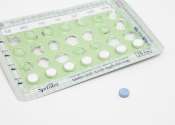ACOG: Intrauterine device insertion linked to weight loss
(HealthDay) -- Women who undergo postpartum or interval insertion of Levonorgestrel-releasing Intrauterine System (LNG-IUS) or Copper T 380A (CU-T) intrauterine devices experience weight loss in the two years following insertion, ...
May 7, 2012
0
0








